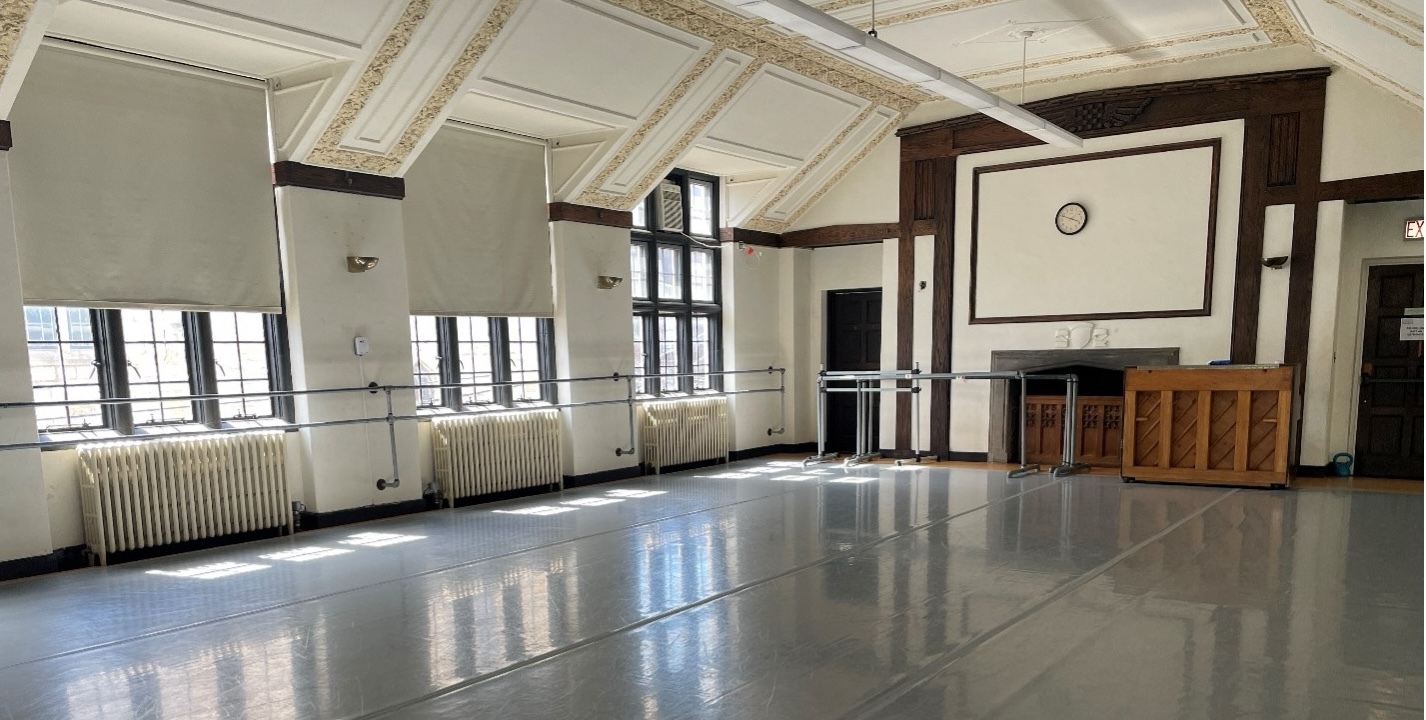
Through a variety of grant types, the Driehaus Arts and Culture program funds initiatives in arts service, generally defined as specialized support that aims to build the business acumen, management capacity, and backbone structures of Chicago’s arts ecosystem. Eligible initiatives range from behind-the-scenes assistance, such as management consultation and administrative training, to shared creative platforms and convenings hosted by local nonprofits. The Driehaus Arts and Culture portfolio has evolved and expanded over the past few years, and now fully one third of all recurring grants provide program support to “space plus” initiatives.
Driehaus Arts and Culture is generally unable to provide funding for arts and culture facilities that offer discounted rental rates to other nonprofit organizations without additional benefits. However, when those discounts — defined as below-market rates — are combined with capacity building and/or professional development opportunities, the host organization may be invited to apply for “space plus” support.
The recipients of these grants are broadly varied in terms of facility size, geographic location, the art forms primarily served, and the nature of the programming that puts the “plus” in “space plus.” Some are relatively small operations, for example: a group renting a dance studio once a week meets monthly with a mentor who provides guidance on grant applications and suggestions to help the client strengthen their online presence. Other funded programs may invite multiple tenants to be part of a peer learning cohort that gathers quarterly for presentations by guest experts on topics like board development and individual giving. Still others might give ascending, early-career curators low-risk chances to experiment with — and learn from — programming a six-month season of film screenings or live music. The host facility might offer access to equipment and other resources that would be cost-prohibitive for the renter to secure on its own, like a 16-channel audio array or a hardwood floor that’s purpose-built for tap dance.
Sometimes the rental periods are referred to as “residencies” and sometimes the grant instead supports a “membership” model. Some “space plus” programs are largely revenue-supported through earned income, while other programs are heavily subsidized to lower economic barriers to participation.

Driehaus Arts and Culture staff don’t consider one approach to “space plus” better than any other; to the contrary, they celebrate this diversity of program design, especially the ways these differences reflect the unique qualities of cultural communities. Practitioners of one art form may have common needs that aren’t shared by practitioners of another art form. For itinerant, non-union theater companies, it can be hugely helpful to have a venue handle ticket sales and other transactions. For touring ensembles, regular access to presenters visiting Chicago can facilitate audience expansion and revenue through bookings. One grant recipient recently shared that their organization is revising its “space plus” benefits in response to client feedback; what began as optional, one-on-one artistic mentorship sessions might become small-group financial management workshops.
A comprehensive Driehaus Arts and Culture portfolio review in the first quarter of 2025 surfaced the many ways that grant recipients fulfill the “plus” requirement — and found 14 different expressions of arts service. Some appear across the entire category, such as general liability insurance coverage for on-site activities, referrals to potential partners and vendors, technical assistance, marketing support, and wireless internet access. Others are more unique or discipline-specific, like free access to conference rooms and theatrical lighting and sound boards.
The universally present components, however, are not additional eligibility requirements. That might close the door in the future to supporting a wonderful program on a technicality and might make it more difficult for facilities hosting a certain art form versus another to apply. (As an example, not all “space plus” grantees are required to offer on-site storage space. Doing so for writers is quite simple — one drawer in a cabinet for pencils and notebooks could suffice — while for sculptors, that might call for thousands of cubic feet, carefully climate-controlled.)
The Richard H. Driehaus Foundation is grateful for its peer philanthropies in Chicago who see the critical need to fund these key sites in the city’s arts and culture ecosystem. As quoted recently by Chris Jones in the Chicago Tribune, Mignon Stewart of the Paul M. Angell Family Foundation noted that its grantees “have expressed how the lack, losses, and rising costs of viable rental spaces affects their ability to plan seasons, shortens production runs, and strains already tightening budgets. These organizational impacts are also felt by our city’s incredible artists who are provided fewer weeks of work and less opportunity to engage in their craft.”
To the organizations generously sharing their space — and much more — we say, “Thank you.”


